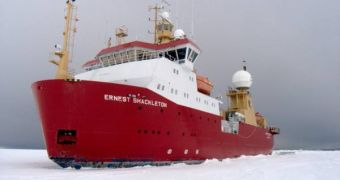A new joint scientific study in the Antarctic, involving researchers from the British Antarctic Survey (AS) and the NASA American space agency, has revealed that the growing extent of sea ice that has been recorded at the South Pole over the last 30 years is not a result of a cooling climate, as critics of global warming have suggested, but one of the influence exerted on the Antarctic by the ozone layer hole. The research will be published on Thursday, in the April 23rd, 2009 issue of the scientific journal Geophysical Research Letters.
By changing the way in which air flows over and around the Southern Continent, the ozone layer hole in the atmosphere has managed to stop the effects of greenhouse gases on sea ice for a short while. However, this is a very important reason for concern, because, if other parts of Antarctica, especially the western regions, are severely affected by global warming, then it's only a matter of time until the places that have thus far been under the protection of the ozone layer will soon be overrun too.
“Our results show the complexity of climate change across the Earth. While there is increasing evidence that the loss of sea ice in the Arctic has occurred due to human activity, in the Antarctic human influence through the ozone hole has had the reverse effect and resulted in more ice. Although the ozone hole is in many ways holding back the effects of greenhouse gas increases on the Antarctic, this will not last, as we expect ozone levels to recover by the end of the 21st century. By then there is likely to be around one third less Antarctic sea ice,” BAS researcher, Professor John Turner, who is also the lead author of the new study, said.
“Understanding how polar sea ice responds to global change – whether human-induced or as part of a natural process – is really important if we are to make accurate predictions about the Earth's future climate. This new research helps us solve some of the puzzle of why sea-ice is shrinking in some areas and growing in others,” the expert added.
Satellite readings from NASA have also evidenced the fact that, while sea ice in the East Antarctic has registered a small increase, of about 100,000 square kilometers per decade, the West Antarctic Peninsula has lost immense amounts of ice, and has warmed by about three degrees Celsius over the past 50 years.

 14 DAY TRIAL //
14 DAY TRIAL //